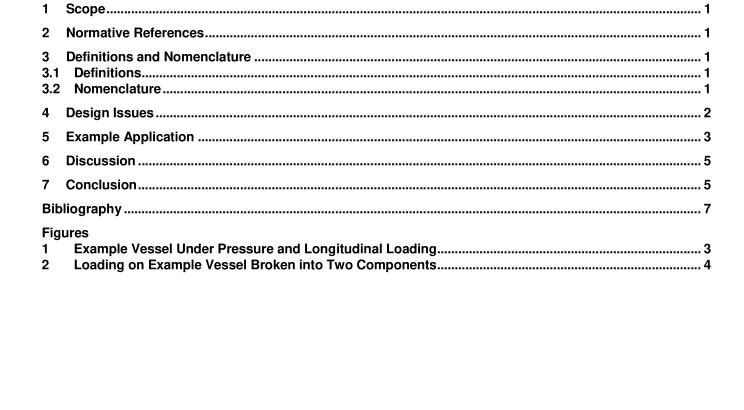API TR 17TR4:2016 pdf free download.Subsea Equipment Pressure Ratings
4 Design Issues During the design of any piece of equipment, all loads and conditions that may realistically occur must be considered, including accidental loads. A complete functional understanding of the system is needed to appropriately define design loads and operating conditions. API 1 7D defines rated working pressure (RWP) as the maximum internal pressure that the equipment is designed to contain and/or control (see API 1 7D [201 1 ], 3.1 .42). This is an absolute pressure.
The API specifications state that the effects of external load, such as external pressure, should be taken into account in the design, but the use of external pressure to increase the equipment RWP is not recommended. The equipment design must be evaluated for fitness for service and shown to provide sufficient margins for all relevant failure modes in a consistent manner. As stated in API RP 1 7G, failure is an event causing an undesirable condition, e.g. loss of component or system function, or deterioration of functional capability to an extent that the safety of the unit, personnel or environment is significantly reduced (see API 1 7G [2006], Section 3.1 .50). Failure of a pressure vessel is commonly described using the following forms:
ductile failure (called plastic collapse in ASME BPVC);
brittle failure resulting from use of brittle materials or from environmental cracking;
fatigue failure resulting from cyclic loading;
failure from service criteria (as defined by the manufacturer, such as elastic deflection resulting in binding of components).
Systems must be evaluated for additional potential failure modes such as:
failure of sealing mechanisms
failure of non-metallic sealing materials
failure of closure bolting
Therefore, limits must be defined for materials and loads to provide protection against the appropriate types of failure. ASME BPVC Section VIII, Div. 2 and ASME BPVC Section VIII, Div. 3 require that the design of the vessel parts shall be limited to values that ensure an adequate safety margin against relevant failure modes under the stated conditions. Examples of loads and conditions or combination of conditions that must be considered during the equipment design phase include:
internal pressure,
external pressure,
It is essential that the designer be able to justify that the design has adequate margins to protect against failure due to any reasonable combination of possible events during the life cycle of the product. Safety margins are addressed in industry-specific codes, standards, and recommended practices. However, these documents are usually not intended to be used as a handbook and must be applied in conjunction with education, experience, and careful engineering judgment. API 1 1 1 1 states the following: “Nothing in this RP should be considered as a fixed rule for application without regard to sound engineering judgment” (see API 1 1 1 1 [1 999], Section 1 .5). API 1 7D further states that: “Users of this standard should be aware that additional or different requirements might better suit the demands of a particular service environment, the regulations of a jurisdictional authority or other scenarios not specifically addressed” (see API 1 7D [201 1 ], Introduction).
5 Example Application
The following example of a closed-end cylinder is shown only to illustrate the effect of external pressure on the stresses of the cylinder. The example does not represent a complete design verification analysis of the vessel, but only one aspect of the design verification analysis.
Figure 1 represents a simple closed-end cylinder being acted on by both simultaneous internal pressure (P i ) and external pressure (P o ). There is an external longitudinal force (F) in addition to the pressure loads.
6 Discussion
Note that the VME stress calculation for the cylinder is a function of differential pressure, (P i – P o ), and external force, F. Therefore, the failure criterion based on the VME stress is affected only by differential pressure and F. If the relative difference between P i and P o does not change, as is the case with an internally pressurized vessel evaluated at both atmospheric conditions and in deepwater, the VME stress does not change.API TR 17TR4 pdf download.API TR 17TR4:2016 pdf free download
